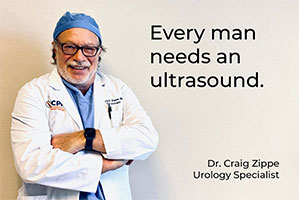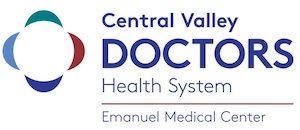PSA Blood Testing for Prostate Cancer: The Secret to Early Detection & Successful Outcomes
Nov 19, 2020 Article by Craig Zippe, M.D., Urologist at Emanuel Medical Center and FCPP
Article by Craig Zippe, M.D., Urologist at Emanuel Medical Center and FCPP
Prostate cancer is the most common cancer in men over the age of 50 and fortunately, has an excellent prognosis if detected early. With early detection and appropriate surgery or radiation therapy, the disease is cured in four out of five cases. In many cases in patients over 70 years old, the cancer can be observed, followed and treated if it progresses. The key to success is early detection, which opens the door to all the treatment options. In addition to successful cure rates, early detection may also offer better outcomes and fewer complications. When prostate cancer is detected early, there may be fewer cases of urinary incontinence and erectile dysfunction; debilitating complications in men that significantly change their quality of life.
So how do we detect prostate cancer early?
The secret is the early blood test called prostatic-specific antigen (PSA), which measures the amount of PSA in your blood. PSA is a protein produced by both cancerous and noncancerous tissue in the prostate, a small gland that sits below the bladder in men. The PSA test can detect high levels of PSA that may indicate the presence of prostate cancer.
This blood test begins to rise or elevate above normal, roughly three or four years before the cancer is felt or palpable on a digital rectal exam. There are a few prostate cancers that do not secrete the PSA early and the digital rectal exam is still required but the vast majority of cases are detected early from the PSA blood test.
All men above the age of 50 years old should have an annual PSA blood test, and if there is a family history of prostate cancer – father or brother – we recommend the first PSA test around 45 years of age.
If the PSA is elevated above the normal range, the urologist will usually recommend a prostate biopsy; an office procedure done under regional or local anesthesia with typically minimal complications. If the biopsy is positive for cancer, then the patient will be given his treatment options: observation or follow-up, radiation therapy, or radical prostatectomy. A positive biopsy will grade the tumor on its aggressiveness, giving it a Gleason number from 5-10. In general, observation and radiation therapy are first line treatments for early cancers with lower scores – 7 or less – and surgery is recommended for aggressive scores at 7, 8, 9 and 10.
For prostate cancer detected early – a Gleason 6 or a friendly 7 – the cure rates with these cancers approach 90% and may have fewer complications. These early detected cancers also qualify for observation or follow-up and many times no treatment is necessary other than serial PSA testing and serial prostate biopsies.
We now circle back to the topic of early detection and asking the question: If I am going to get prostate cancer in my lifetime, how do I get a friendly Gleason score 6 or a friendly 7 cancer, a curable cancer that will not risk my quality of life with the treatment complications of urinary incontinence and erectile dysfunction?
I would recommend you get the PSA blood test every year. Be sure to talk with your physician to determine which options are best for you.


